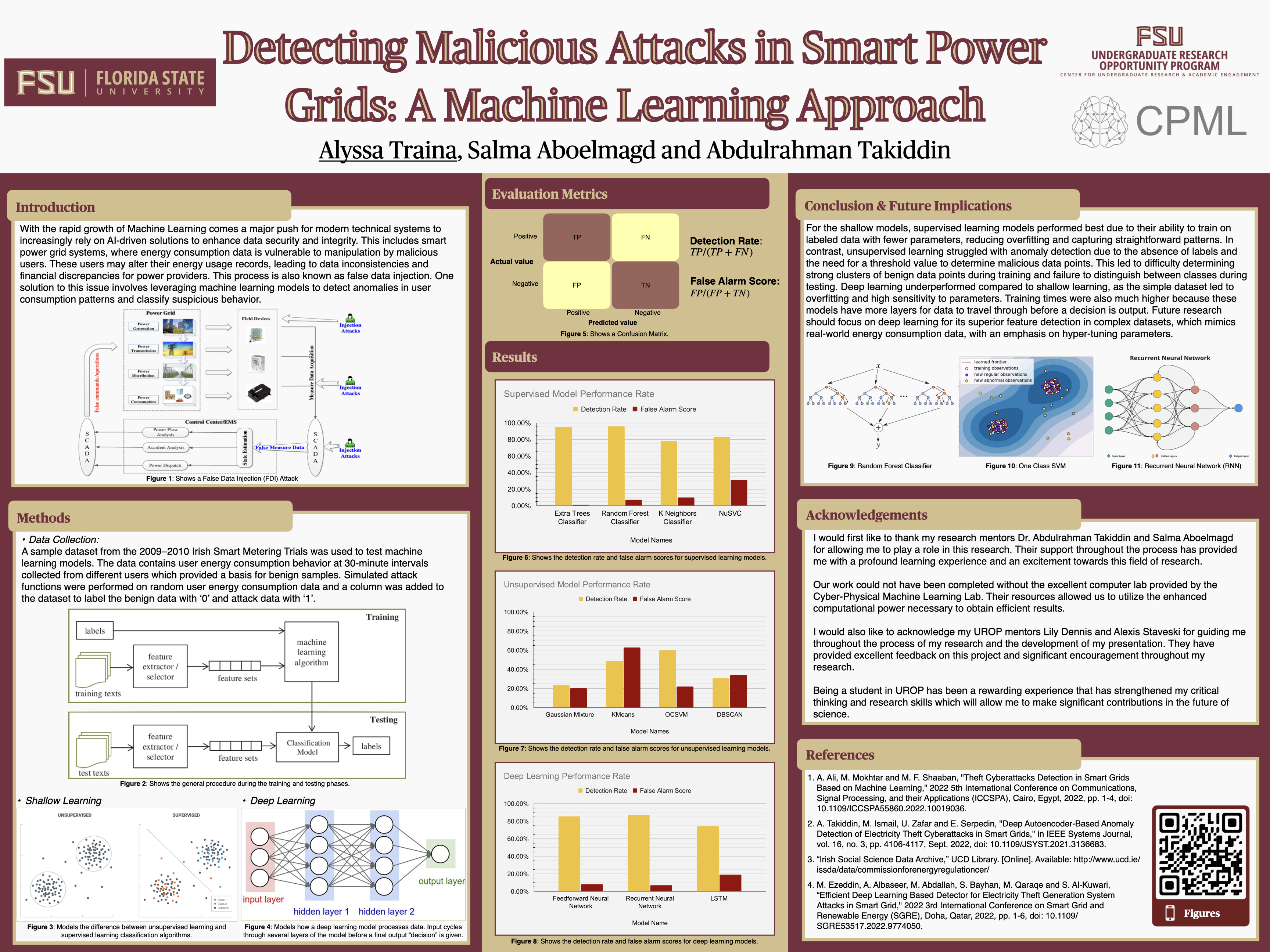Research Symposium
25th annual Undergraduate Research Symposium, April 1, 2025
Alyssa Traina Poster Session 1: 9:30 am - 10:30 am/ Poster #33

BIO
Hello, my name is Alyssa Traina and I am originally from Titusville, Florida. I am currently a second-year student pursuing a Bachelor of Science in Computer Science with the hopes of becoming a software engineer. My campus involvements include the Association for Computing Machinery, Women in Computer Science, and the Project Development Club. I am also currently a software engineering intern for Raide and J.P. Morgan Chase.
Detecting Malicious Attacks in Smart Power Grids: A Machine Learning Approach
Authors: Alyssa Traina, Dr. Abdulrahman TakiddinStudent Major: Computer Science B.S.
Mentor: Dr. Abdulrahman Takiddin
Mentor's Department: Department of Electrical and Computer Engineering Mentor's College: College of Engineering Co-Presenters:
Abstract
Many smart power grids that collect information about user household energy consumption are vulnerable to attacks that lead to data discrepancies and financial deficits. The aim of this research is to identify the most effective Machine Learning models that can be utilized to analyze false data injection attacks being performed on user data and classify anomalies as malicious. These models may then be used to automate the security process in smart power grids and detect subtle patterns that may be overlooked by people. Predominantly two types of Machine Learning models were examined in this research: shallow learning models and deep learning models. The shallow learning models were further subdivided into supervised learning models and unsupervised learning models. Based on an analysis of model algorithms, candidate models were selected from each category to be trained on a simple experimental dataset to classify malicious users. Performance metrics such as detection rate, accuracy, f1 score, and false alarm score were used to assess the models’ results. This research found that, overall, supervised shallow learning models efficiently discovered malicious patterns, while there was a drop in performance for the unsupervised shallow learning models and deep learning models due to the simplicity of the dataset and the need for labels for accurate training. The results indicate that future research on more complex and larger datasets should be conducted in the field of deep learning due to the ability of the models to interpret complex features, which is desirable for real-world user energy consumption data.
Keywords: Machine Learning, False Data Injection Attacks, Smart Grid Security, Cyber-Physical Systems, Binary Classification


